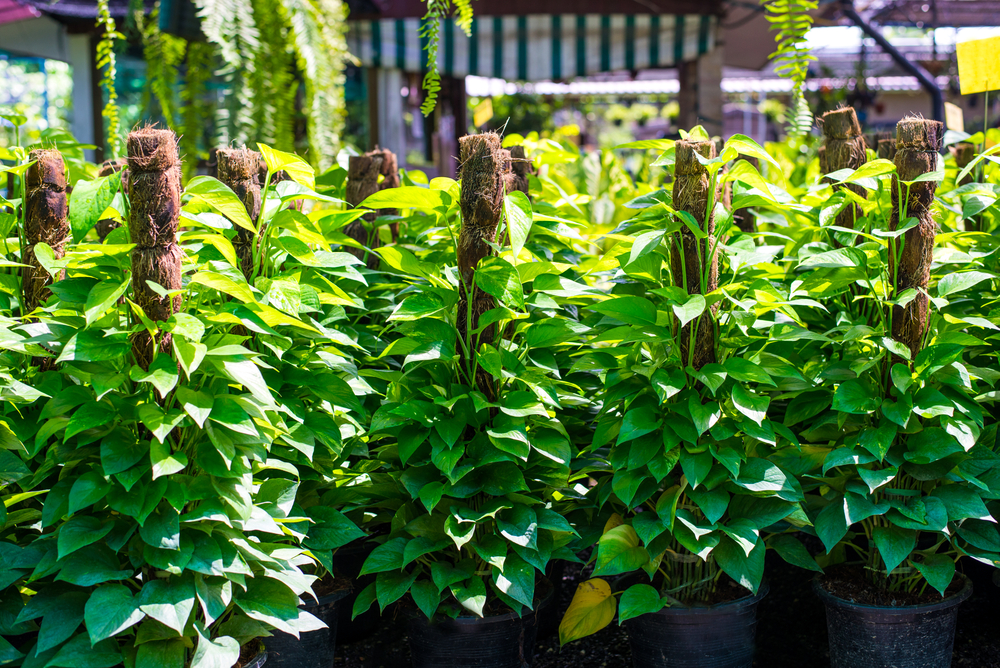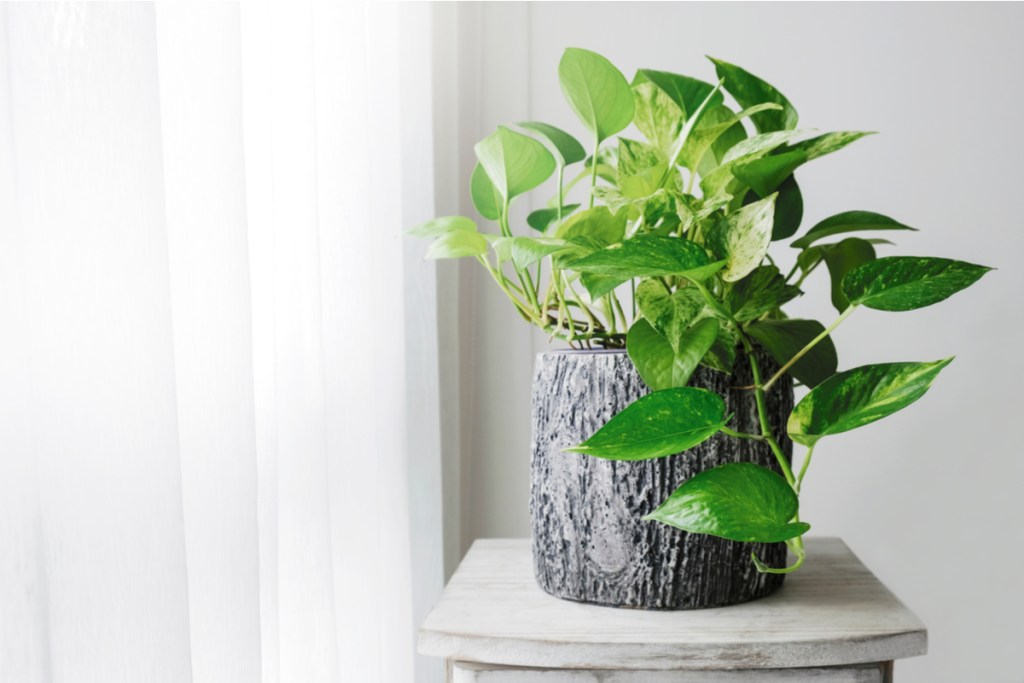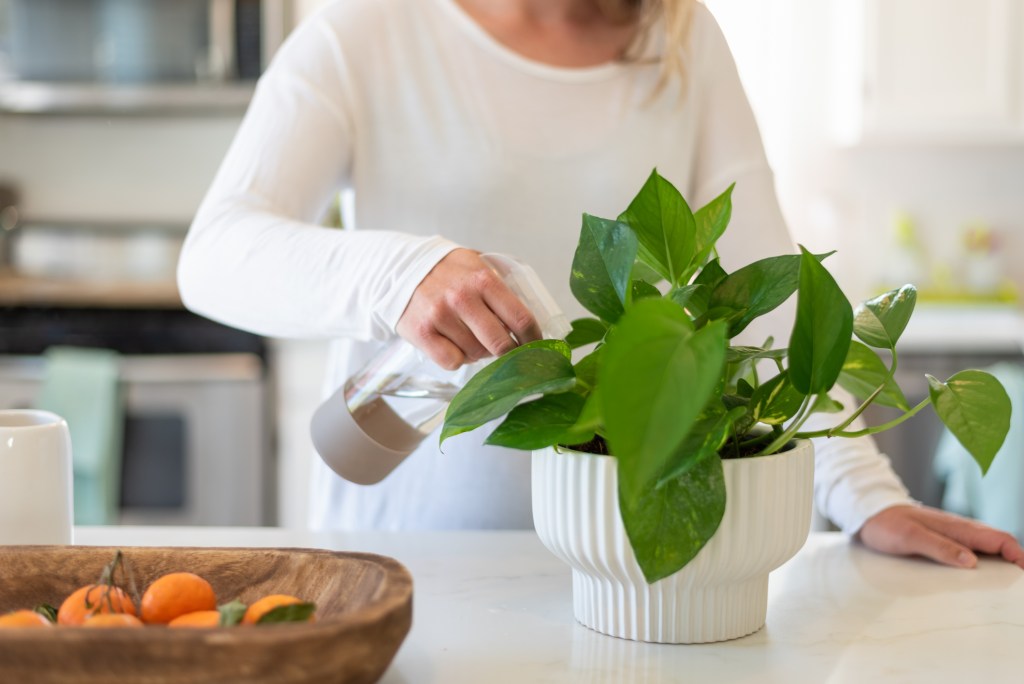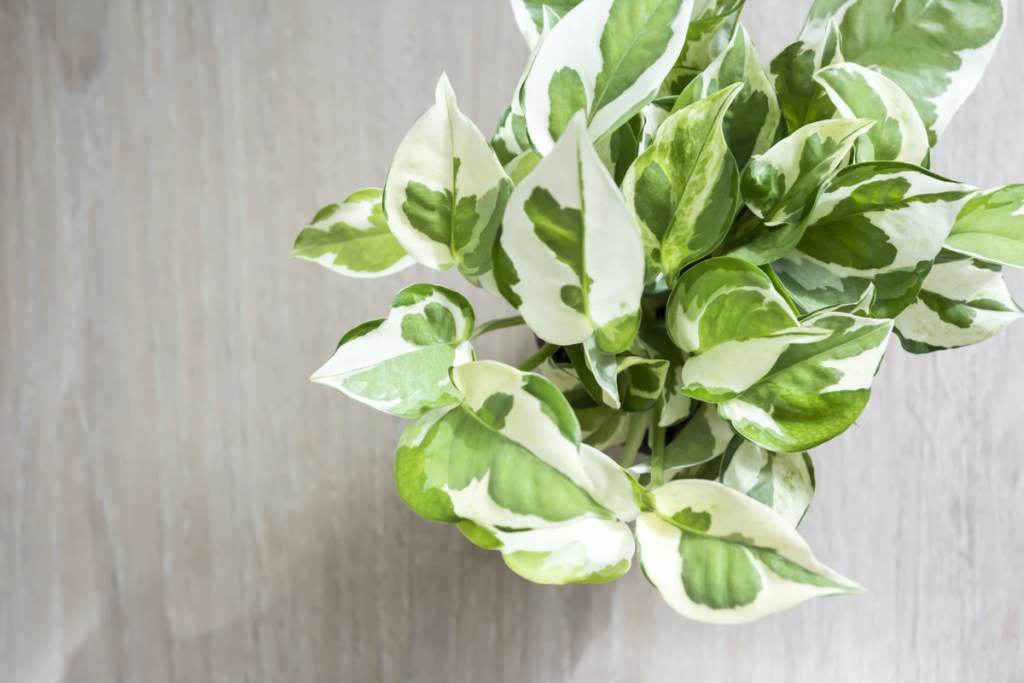Maybe you're a new plant parent, and like so many beginners, you brought home a simple golden pothos to start your indoor plant collection. Maybe you're just fascinated by this fast-growing plant's low-key nature and seemingly endless varieties.
Whatever the case, you may have noticed that your once full and bushy pothos has gotten leggy and now looks like the rest of us when we go too long without a haircut. Rest assured that this isn't just you; this problem affects pothos and many other vining plants, but there are plenty of things you can do to help your leafy buddy.
The pothos plant is probably the most popular houseplant in homes across the United States. Even non-plant lovers often have pothos somewhere in their homes. The plant is easy to care for, which attracts those looking to add some green to their space, and the vines are ideal for hanging, draping, and climbing around the home.
This popularity also means they are often cared for by those who don’t know much about plants. A leggy-looking pothos isn’t a dying pothos; however, it’s a sign the plant isn’t getting the care it wants and needs to be its most stunning self. So here are the ways you can encourage your plant to grow bigger leaves and fuller pothos vines.

How to prune and propagate pothos
When growing a vining plant, it can be tempting to allow it to grow as long as it wants to. The long vines are elegant and are a great way to decorate your home, but letting them get too long can be draining on the plant. In nature, things like animals and weather naturally prune the vines. In our homes, we have to prune them ourselves. The bonus? You can either fill out bare spots in the pot with the cuttings or try to get a whole new plant to take root!
Step 1: Use a pair of disinfected pruning sheers to trim vines.
Be sure not to take more than one-third of the plant at once. Doing so could send it into shock and stunt growth.
Step 2: If you plan to root the cutting, make the cut just below the node (the spot where the leaf emerges from the vine; it will look like a little bump on the vine).
If the piece of trimmed vine is long enough and you want to maximize your chances of getting a cutting to take root, chop up the vine into multiple pieces, always cutting right below the node of a leaf.
Step 3: Fill a small starter pot or container with potting soil.
The cuttings can either be placed directly into the soil or in a glass of water and placed in a spot with plenty of bright, indirect light until they develop roots.
Step 4: When the plant has taken root, you can either keep it in its pot and let a new plant develop, or you can transplant it back into the original pot to fill out any bare spots.

How to grow pothos on a pole
There are a lot of plants you can grow on a pole, and a pothos is one of them. In their natural habitat, these plants grow up and around large trees in the rainforest, so it’s their natural growth pattern to use a pole.
Pothos grown on poles tend to grow fuller vines and bigger leaves. The leaves can access better lighting when growing this way, allowing for better photosynthesis, and they tend to not reach for the sun as much as draping or hanging pothos.
Step 1: When at all possible, begin this process while the plant is small and young, before it has developed firm, thick vines.
However, you can still achieve this on more mature plants. It will just take a bit of time to train the vines to climb.
Step 2: Insert a bamboo cane, moss pole, trellis, or other object the plant can climb into the pot.
Step 3: Using twine, string, or garbage bag ties, gently tie the vines onto the pole or climbing tool one at a time and wind them up like they would along the side of a tree.
Step 4: Give the plant time to acclimate.
As it grows bigger, keep tying up the ends to the pole.

Provide enough light
Often, pothos will have fewer full vines due to a lack of sunlight. They then grow smaller leaves that are further apart as they try to find and reach toward the sunlight.
Step 1: If you notice your plant's new leaves are getting smaller or spreading out more on the vine and stretching toward the light, move the plant somewhere with bright, indirect light.
Step 2: Be careful with variegated varieties.
Variegated plants are much more sensitive to sunburn than non-variegated plants. For example, if you have a marble queen pothos that needs more sun, avoid putting in it direct sunlight. Instead, find a spot that’s about 4 to 6 feet from a south-facing window, or put sheer coverings on the window to filter the light.

Feed them regularly
Like all plants, pothos need nutrition. If their vines aren't looking so great, they might just need some plant food. Life gets in the way sometimes, and we often forget to feed our plants as regularly as they’d like.
Step 1: Give your pothos a balanced fertilizer approximately once a month during the growing season.
Step 2: If you prune the plant, fertilize it to help it recover and push out new growth.

Don’t overwater or underwater
Sometimes plant lovers will avoid watering a plant for fear of overwatering, or they’ll overwater for fear of them drying out. This inhibits the plant’s growth pattern and often leads to spindly vines or root rot. The biggest reason plant owners kill their plants is by overwatering. This is easy to do and nothing to be ashamed of.
Step 1: Use a moisture meter to check when your plant is wet, moist, or dry.
Step 2: When the pothos is moderately dry (don't let it completely dry out!), water it heavily.
Step 3: When pothos plants are thirsty, their leaves will droop.
If you notice your plant is looking a little sad, give it a drink and it should perk right back up.

Rotate the plant routinely
Lastly, it’s imperative to rotate your plant routinely. If you don’t, your pothos will likely grow more heavily on one side and be less full on the other side. That side probably won't be as healthy or attractive as the one facing the light. You don’t have to do this every day; turning the plant once every other week or so is best.
We only want what's best for our plants, and sometimes we need a refresher on our plant’s needs. So if you’re noticing your pothos plant's vines aren’t as robust as they once were, try some of these tips and give it a few months to see if that helps. It will take a little bit of time to notice a difference, but it will be worth it in the end.
Editors' Recommendations
- Focus on color: Bring some sunshine to your garden with these orange plants
- Do you live in climate zone 2? Here’s what you need to know
- Climate zone 3 plants that will thrive in cool temperatures
- Do you live in climate zone 10? Here’s our guide to choosing the perfect climate zone 10 plants
- No space? No problem! Here’s how to create an indoor herb garden in a small space




